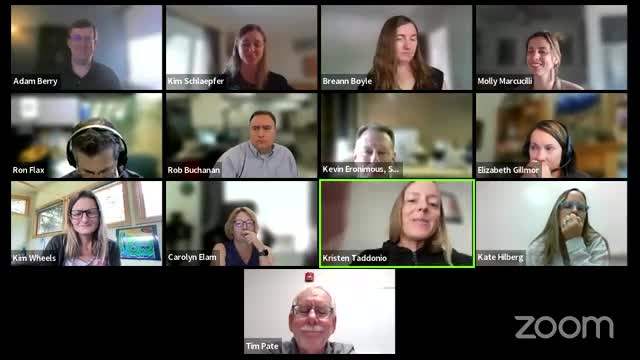Colorado experts propose high-efficiency filters to enhance indoor air quality in buildings
April 27, 2025 | Energy Office, State Agencies, Organizations, Executive, Colorado
This article was created by AI summarizing key points discussed. AI makes mistakes, so for full details and context, please refer to the video of the full meeting. Please report any errors so we can fix them. Report an error »

In a recent meeting of the Energy Code Board, members gathered to discuss pressing issues surrounding energy equity, affordability, and indoor air quality in Colorado. The atmosphere was charged with a sense of urgency as participants explored how building energy codes could be improved to better serve the community.
One of the key discussions revolved around the mantra "seal it tight, ventilate right," which emphasizes the importance of properly sealing buildings to enhance energy efficiency. However, as buildings become more airtight, the need for effective ventilation systems becomes critical. Participants highlighted that while sealing buildings can reduce energy costs, it can also lead to increased indoor air quality issues if not managed correctly.
A notable suggestion emerged from the conversation: the installation of energy recovery ventilators (ERVs) equipped with high-efficiency filters. Currently, many ERVs are shipped with basic filters that fail to adequately remove harmful particulates, such as those from wildfire smoke. This poses a significant risk to residents, especially in a state prone to wildfires. One board member proposed that manufacturers should calibrate ERVs for high-efficiency filters from the outset, which could improve air quality without imposing substantial costs.
However, another member cautioned against simply swapping out filters, as this could increase energy consumption due to higher static pressure. Instead, they recommended using dedicated filter boxes with larger surface areas to maintain efficiency while enhancing air quality.
The discussion also touched on the broader implications of carbon emissions and their hidden costs on public health and the environment. One participant pointed out that current cost analyses often overlook the impact of carbon on health, emphasizing the need for a more comprehensive approach to evaluating building codes and their environmental footprint.
As the meeting concluded, it was clear that the board is grappling with complex challenges that intertwine energy efficiency, public health, and environmental sustainability. The ideas shared during this session could pave the way for significant improvements in Colorado's energy codes, ultimately leading to healthier living environments for all residents. The board's ongoing efforts reflect a commitment to not only enhancing energy efficiency but also ensuring that the benefits are equitably distributed across communities.
One of the key discussions revolved around the mantra "seal it tight, ventilate right," which emphasizes the importance of properly sealing buildings to enhance energy efficiency. However, as buildings become more airtight, the need for effective ventilation systems becomes critical. Participants highlighted that while sealing buildings can reduce energy costs, it can also lead to increased indoor air quality issues if not managed correctly.
A notable suggestion emerged from the conversation: the installation of energy recovery ventilators (ERVs) equipped with high-efficiency filters. Currently, many ERVs are shipped with basic filters that fail to adequately remove harmful particulates, such as those from wildfire smoke. This poses a significant risk to residents, especially in a state prone to wildfires. One board member proposed that manufacturers should calibrate ERVs for high-efficiency filters from the outset, which could improve air quality without imposing substantial costs.
However, another member cautioned against simply swapping out filters, as this could increase energy consumption due to higher static pressure. Instead, they recommended using dedicated filter boxes with larger surface areas to maintain efficiency while enhancing air quality.
The discussion also touched on the broader implications of carbon emissions and their hidden costs on public health and the environment. One participant pointed out that current cost analyses often overlook the impact of carbon on health, emphasizing the need for a more comprehensive approach to evaluating building codes and their environmental footprint.
As the meeting concluded, it was clear that the board is grappling with complex challenges that intertwine energy efficiency, public health, and environmental sustainability. The ideas shared during this session could pave the way for significant improvements in Colorado's energy codes, ultimately leading to healthier living environments for all residents. The board's ongoing efforts reflect a commitment to not only enhancing energy efficiency but also ensuring that the benefits are equitably distributed across communities.
View full meeting
This article is based on a recent meeting—watch the full video and explore the complete transcript for deeper insights into the discussion.
View full meeting
